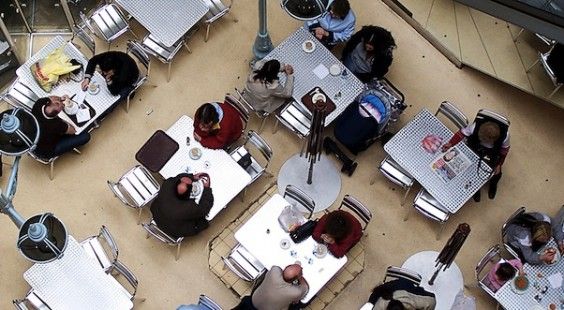The original rules of the lunch overhaul (one being that schools couldn’t serve spaghetti and meatballs with garlic bread because the combo includes too many grains) went into effect at the beginning of the school year. A few weeks later, high schoolers whipped up a video called “We Are Hungry” to make it clear the healthier lunches simply weren’t cutting it. The video, showings kids dramatically fainting from too low a calorie intake, went viral. With so many complaints (and likely some help from the video) the administration reversed some of their school lunch initiatives last week. It’s not just about cutting a little peanut butter because it exceeds government issued protein portions (if it’s served with a chicken sandwich).
So what’s the big deal?
The great peanut butter and garlic bread dispute of 2012 is one example of the government playing a role in our food choices, and it’s not just affecting school kids.
The FDA has the ability to ban the sale and distribution of certain items, like raw unprocessed foods (one of the most controversial being raw milk). While the federal government has a hand in food policy, state and municipal governments are also involved. Initiatives like the New York City soda ban (prohibiting restaurants from selling sodas larger than 16 ounces after March 12, 2013) and trans fat ban illustrate even local government’s ability to influence what we put on our plates.
Of course, food regulation isn’t new, and some policies meant to forge a healthier nation have been effective. The government is pushing to improve access to healthy, affordable food (through programs like the Healthy Food Financing Initiative). And with junk food commercials influencing kids’ eating habits in less-than-ideal ways, perhaps some healthier exposure is warranted. But the question remains: Where do we draw the line between the government looking out for consumer health and violating freedom of choice?
The Takeaway
The days of unidentifiable school lunch slop may be dwindling, and we’ve got the government to thank for that, at least in part. But any change also carries the risk of public backlash. Though the current administration passed some pretty hefty changes to school lunches just a few months ago, not all of the changes were permanent. The peanut butter and garlic bread debate shows how a group of concerned citizens — in this case a bunch of high schoolers — have the agency and ability to help reverse parts the government’s food policy.
But if the government doesn’t step in to regulate foods that pose potential health risks, then some consumers might end up eating food that could make them sick. While a lot of food policy is in the name of keeping U.S. citizens safe and combating obesity, many groups are concerned the line between wise regulations and too much control is being crossed. Food regulation may not be all bad, but where do you draw the line when it comes to government restrictions?
How far is too far? Is it okay for the government to control what we eat and drink? Let us know in the comment section below or tweet the author @nicmcdermott.

